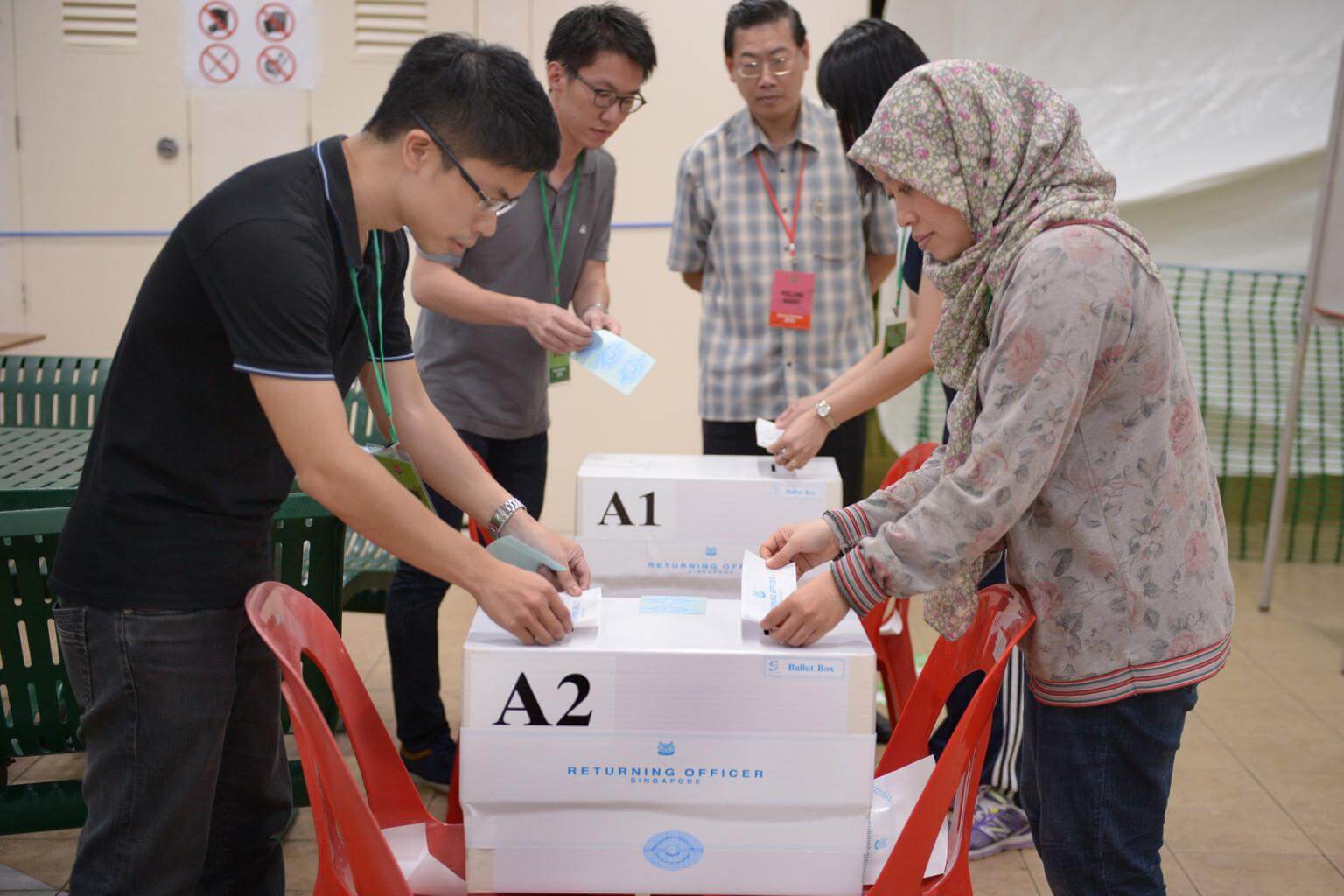Counting machines to be used in next election
Sign up now: Get ST's newsletters delivered to your inbox

The Elections Department said the use of machines will make the counting process three times faster. Polling results can be ready up to an hour earlier than in past elections.
PHOTO: ST FILE
Adrian Lim, Adrian Lim
Follow topic:
SINGAPORE - Voters at the next election in Singapore will be able to register electronically at polling stations, and votes will be tallied using counting machines.
These new initiatives will help to improve the election processes and give voters a smoother experience at polling stations, the Elections Department said on Thursday (Nov 22).
While electronic means will be adopted, hard copy ballot papers will continue to be used, and counting assistants will still handle the mixing, unfolding and sorting of the papers.
The Assistant Returning Officer will also still be responsible for looking through votes which are unclear and determining if they are rejected.
The Elections Department said the use of counting machines will make the counting process three times faster. Polling results can be ready up to an hour earlier than in past elections.
The counting machines are similar to those used to handle banknotes and will not be connected to the Internet. These devices will also be battery-powered.
Without the counting machines, it takes about 200 seconds to count and confirm 100 ballot papers, the Elections Department said.
The process involves a manual count by one counting assistant, with a second counting assistant verifying the number.
But the process takes about 65 seconds with counting machines. The first counting assistant has to take a pile of sorted ballot papers and use a counting machine to reach a count of 100.
This pile of 100 is then passed to a second counting assistant for verification using a separate counting machine.
In total, the time taken for processing and counting 4,000 ballot papers - including mixing, unfolding and sorting - is cut from 180 minutes to between 100 and 130 minutes. This is a reduction of approximately 30 per cent, and a saving of between 50 and 80 minutes, said the Elections Department.
To ascertain the accuracy of the counting machines, a check will be performed before vote counting starts, and candidates and appointed counting agents can witness this test. The test will be done with specimen papers.
As for the use of e-registration, voters can expect shorter waiting times at polling stations.
They will scan their NRICs in a similar manner to how registration is done at polyclinics and hospitals. This is faster than the existing process of election officers manually searching for and striking off the voter's name from a hard copy register.
With this, the layout of the polling station will also be re-designed. Voters do not have to go to specific lanes to get themselves registered but can approach any one of two e-registration counters at each polling station.
To prepare for the next General Election, which must be held by January 2021, the Elections Department will be calling an open tender later this month for the voter e-registration system. This tender is expected to be awarded by the first quarter of 2019.
For the counting machines, the Elections Department may leverage an existing logistics contract, to lease up to 2,700 of such devices. The plan is to have these machines delivered in the third quarter of 2019, and the department will then show them to the political parties.
In the run-up to the next General Election, the Elections Department said it will also call other tenders in the coming months, such as for bus transportation services to ferry election officials, and for IT equipment to support the elections.

